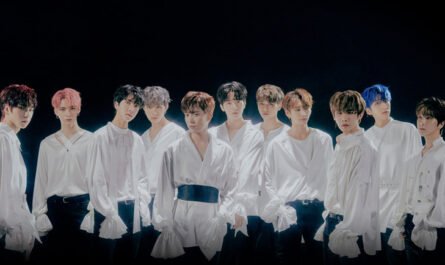Today, K-Pop is in the trend of transnationalization. Capital, culture, and human beings surrounding K-pop come and go in a complex way across national boundaries. In that respect, transnationalization is a similar expression to globalization.
However, globalization refers to merging capital, culture, and human beings. In that case, transnationalization means that even though money, culture, and human beings cross national boundaries, nationalistic tendencies may remain or become stronger or appear in a new form in certain situations. Explain that there is
As a cause or result of transnationalization, K-pop has hybridity. It is not easy to use the expression ”Korean popular music” or ”Korean star” purely. This is because, on the surface, not only the nationality and race of Korean stars but also the songs, choreography, and entertainment system that make up Korean popular music may no longer belong to ”Korea”. (Let’sLet’s think of examples such as importing and adapting songs by foreign composers, recruiting foreign members of K-pop groups, K-pop groups consisting only of foreigners, and transnational corporations of entertainment companies (from now on referred to as ”enter companies).
And now K-pop is consumed all over the world. However, as the number of people who like K-pop has increased, people who feel uncomfortable with its cultural elements also appear inside and outside.
It is time for our society to think about ”cultural diversity” to maintain and expand the interest and liking of more diverse people towards K-pop. Cultural diversity refers to the fact that the cultures of societies and groups can be expressed in various ways, both within organizations and groups and within communities and groups.
This includes diversity in the methods used to represent, promote, and transmit culture, regardless of means and techniques. Diversity in how culture is created, produced, disseminated, distributed, and enjoyed.
In this article, taking transnationalization as an essential concept to explain K- pop’spop’s cultural diversity, we discuss what aspects K-pop’sK-pop’s cultural diversity takes under the trend of transnationalization and what efforts are needed to ensure K-pop’sK-pop’s global popularity.
The transnationalization of K-pop can be divided into three dimensions.
First, the transnationalization of the Korean entertainment industry (from now on referred to as the ”entertainment industry”). As the profit-making structure in the Korean market approaches saturation, the entertainment industry naturally turned its attention to overseas expansion. To effectively go abroad and succeed, several strategies were needed (use of foreign composers and choreographers, recruitment of members from countries where the group entered the country, etc.). In addition, entertainment companies have become transnational corporations by setting up overseas branches and operating fan platforms.
It was the judgment of industrial capital and government policy intervention. The transnationalization of the entertainment industry was a junction of interests between the industry and the government.
Second, the transnationalization of media platforms. In an era where the world simultaneously experiences various cultures outside of national borders, K-pop quickly spread to the world thanks to an environment where language barriers were broken down, and multiple contents could be consumed. Global online video services, music streaming services, social networking services, and fan platforms have made the way people communicate through music more fluid.
Third, transnationalization of image, intimacy, and representation. If the first two are close to changes in the environment or conditions surrounding popular music, the last one is closer to the effects or transitions in K-pop’sK-pop’s character.
The transnationalization of star images makes physically distant or inaccessible stars feel very tight. Social network services, as well as recent fan platforms in particular, allow fans to subscribe to their favorite artist(s) and freely exchange comments/comments or private (voice) messages with them, thereby reducing the distance between artists and fans. It narrows down drastically.
The representative aspects that can appear when transnationalization intersects with K-pop’sK-pop’s cultural diversity issues are as follows.
First, there are events in which nationalism is manifested in transnationalization. This is the case of going out from within the borders of Korea (Yoo Seung-jun incident in the early 2000s, the Jae-bum incident and the Tablo incident in the late 2000s, etc.).
The case going inward from outside the border (Blackpink music video in 2020, NCT U <2020> Make A Wish> stage controversy, etc.), and cases where the inside and outside face each other at the same time (the Tzuyu incident at the mid-2010s, the debate over ”one China” in the early 2020s, etc.).
As transnationalization progresses, K-pop does not become pure and peacefully hybrid but instead reflects the various conflicts and social problems posed by each society that accepts it. It has become a place where nationalism emerges. Transnationalization and nationalism are mutually constructive rather than mutually exclusive.
Second, transnationalization constantly raises cultural diversity issues regarding image, intimacy, and representation. K-pop is not just a music genre but an audiovisual culture. Seeing, hearing, and speaking are all reproduced/produced. Image (controversy over the Lolita concept of girl groups, the unnecessary infantilization of adult women and criticism of fetishism, etc.), representation (black fans’ criticism that K-pop does not acknowledge its origins and uses black culture, whitewash controversy, girl group performance Criticism of objectification, controversy over various lyrics, etc.), racist and misogynistic remarks or actions by artists, xenophobic comments about a specific fan group, and adverse actions by fans such as illegal filming, etc.
K-pop-related content and subjects The incidents and controversies created around (enter companies, artists, media, fans, etc.) are genuinely omnidirectional. Transnationalizing K-pop is a forum for endless and enormous discourse on discrimination and hatred.
Going through the previous discussion, let’slet’s take a look at the points to be discussed about K-pop in the future.
First, the orientation toward cultural diversity is natural, but the perspective of looking at cultural diversity within the industry must be changed. Efforts such as UNESCO’sUNESCO’s ”Convention on Cultural Diversity (Convention on the Protection and Promotion of Diversity of Cultural Expressions)” and Korea’sKorea’s ”Cultural Diversity Act (Act on the Protection and Promotion of Cultural Diversity)” have been enacted, as well as Netflix, Disney, and other global media companies are also voicing their commitment to diversity in the organization-creator-content dimension.
It is important to build meaningful relationships with audiences for the company’scompany’s growth and survival. It is a movement to advocate for the diverse voices and perspectives of many to create such meaningful relationships.
However, cultural diversity here is close to a business strategy. To increase content satisfaction for people worldwide, it is best to develop a variety of content that meets the needs of audiences of various races, ethnicities, genders, and religions.
For example, it is not difficult to answer whether Captain Marvel or Black Panther is the result of showing that Marvel has a mindset for diversity correctly or whether they are the result of a strategy to embrace everyone within the influence of industrial capital.
In business strategy, it is necessary to shift the paradigm of cultural diversity as a coexistence and win-win strategy outside of business. To this end, efforts must be made to increase the diversity of our society not only at the content level but also outside the content production field. To arouse the creator’screator’s awareness, interest, and interest in text as a place of discourse is also requested.
If the text is defined as a place of address, both creators and recipients can gather in it beyond national boundaries. True cultural diversity goes beyond the justification concept of respecting unfamiliar cultures and includes understanding and negotiating differences through dialogue between cultures.
Second, it is necessary to pay more attention to the context or environmental aspects surrounding cultural diversity. The social and cultural situation of the time, the logic of content production as a product, bundles of intellectual property rights (IP), Gukppong, artists’ emotional/labor issues, etc. But above all, the K-pop industry doesn’tdoesn’t just run with artists and fans. Entertainers, artists, media, and fans, the key players that make up the K-pop industry, have maintained and expanded the industry and culture, sometimes competing with each other and sometimes relying on each other.
In the meantime, fans are now not wholly dominant or anti-detoxifying subjects but rather maintain a very negotiating position and think of them as beings who ”understand the desires of industrial capital, but take pleasure while serving in it.” While doing streaming (tri)ming and participating in gungong (three), ”Why do we do what Entersa should do?”, I believe that my favorite artist’sartist’s achievement is my joy. In addition, industrial capital demands and actively encourages artists to become sexual objects. Still, to keep the existence of artists they like in the changing K-pop market, they have no choice but to comply with capital demands.
However, it is necessary to think more about the ”change in width” of the negotiations. This is because (especially the entertainment) industry is pushing in and growing.
At this point, commonly referred to as K-pop 3.0 and the 4th generation idol era, ”fan platforms such as Weverse, Bubble, and Universe are at the center of it. Considering the current situation in which Weverse is developed and operated by a subsidiary of Hive, Bubble is developed and operated by an affiliate of SM Entertainment, and Bubble has decided to take over Universe, which was affiliated with various entertainment companies, the fan platform is very closely related to the entertainment company and the media. Or show that they are connected. Despite its many advantages, the fan platform is the fact that Entersa has created cyberspace in a top-down manner through combination and connection with the venue and allows fan activities to occur in it, and the production of information previously dispersed through several fan communities.
There are also negative aspects, such as collecting and managing fans while monopolizing the distribution process. It may still be close to a world where fans willingly participate to gain pleasure. Still, fans are serving to maintain and expand the entertainment industry no matter their intentions within the planned system, and movements against it are gradually becoming visible.
Various aspects and issues that appear during the transnationalization of K-pop terrain leave some questions. What kind of cultural diversity strategy will K-pop build in the transnational era? After the incidents between international cultural practices and nationalism, how can we rethink them? How should we continue to speak, discuss, and enlighten in the square of endless discrimination and hate discourse? And how will entertainment companies, artists, media, and fans who have maintained and expanded the K-pop industry and culture through competition or dependence under certain circumstances form relationships in the future to fill and change cultural diversity?











